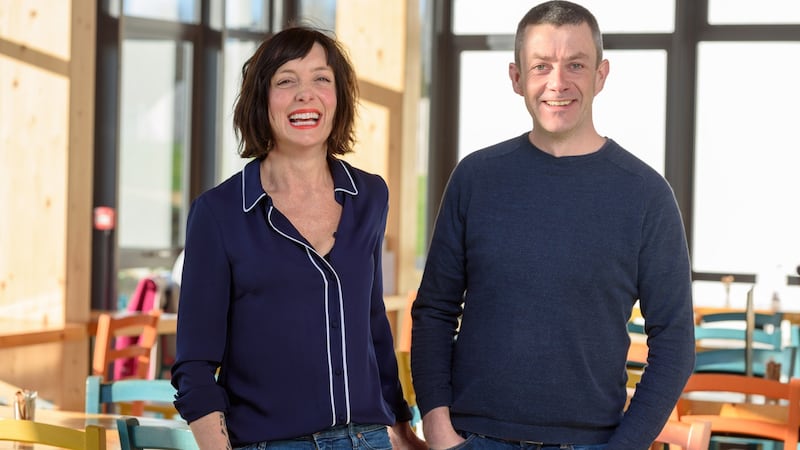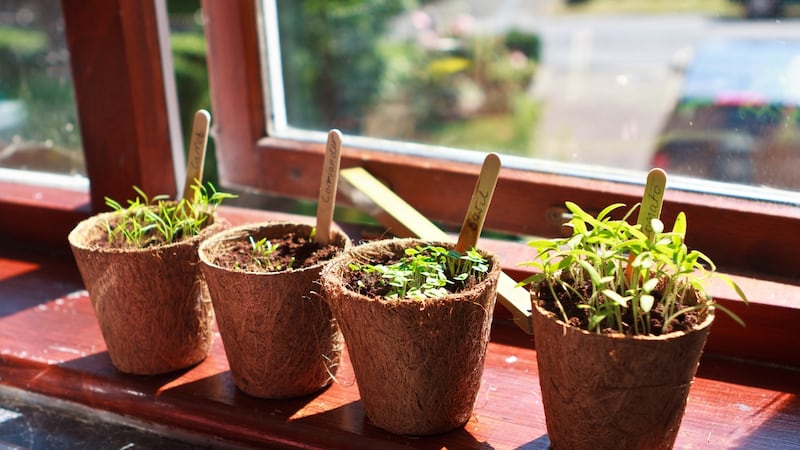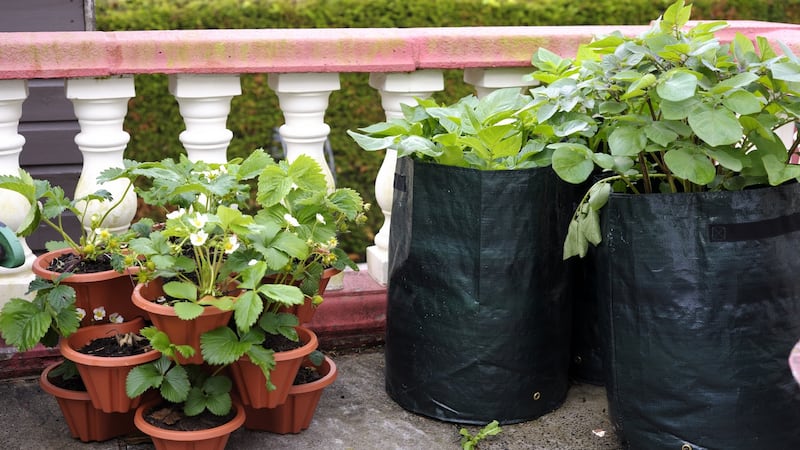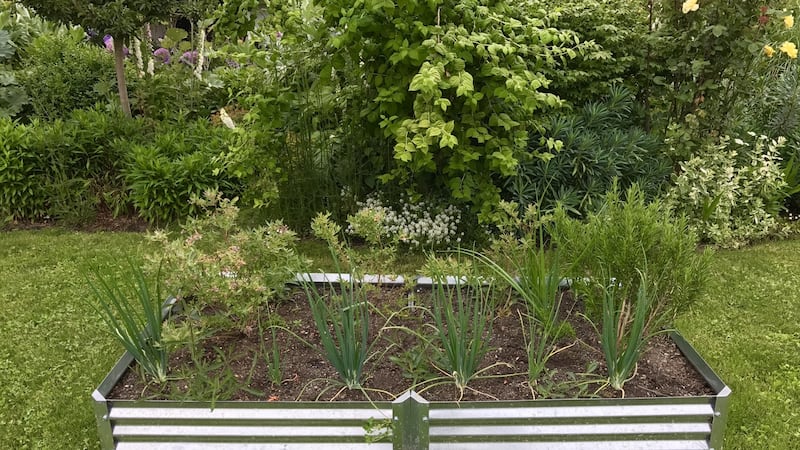I’ve been thinking a lot lately about why so many people are interested in growing their own food again. When we started GIY back in 2008 the bottom was about to fall out of the economy and food growing was something tangible for people to hold on to when pillars of society were crumbling all around us. So it made sense then, but with the economy getting boomier again, what’s the motivation 10 years on?
We can state with confidence that the diet we've created for our modern world pretty reliably makes us sick. Our addiction to highly processed foods has created a pandemic of human ill health and has put Ireland on track to be the EU's most obese nation by 2025. Ultimately I think people are getting a little sick and tired of it all. We're tired of the nonsense around food. The faffing. The confusion. The complexity. Processing food to within an inch of its life. Wrapping it in cellophane. Then wrapping it again. Importing things from Kenya. Cutting entire food groups from our diets – gluten, dairy, meat, carbs – even though we're not 100 per cent sure why.
By growing some food ourselves, we start to create a more meaningful, sensible and simpler relationship with real food. The more we connect with whole foods grown in the living soil, the more alien the processed gunk seems to be.

Once you start growing, a myriad of other benefits present themselves. It is a purposeful, optimistic, mindful activity that gets you out of your head and in to your hands. It gives you access to the very best, seasonal organic produce with zero food miles. Food growers eat with the seasons and, as a result, they are eating food that is at its most nutritious and (hallelujah) most delicious. Intriguingly, research tells us that people who grow some of their own food tend to be healthier, regardless of how much they grow. So that’s the prize. But do you really have the time, the space, the knowledge?
Getting started
The first and best piece of advice is this: just start. Don’t wait until next month or next year. You don’t need green fingers (they are a myth) or a degree in Latin. Don’t be afraid. As pastimes go, it’s really not that scary. Get yourself some seeds and sow them.
The good news is that all seeds want to grow, and they already know how to do it and what they want to become. So more than likely, they will grow. And if not? Well, let’s face it, it’s not the end of the world.
This is not a hobby where you have to spend lots of money to start. On a basic level you need seeds and something to grow them in. That means some good compost (more on that anon) and something to put the compost in. For smaller scale growing that could be seed trays, pots, containers (or even an upcycled colander, pair of wellies, a Belfast sink etc) or for a slightly bigger scale, buy or build a timber raised bed.
You can buy seeds in loads of places these days: in garden centres, in supermarkets, online (some of the best are theorganiccentre.ie, giy.ie, brownenvelopeseeds.com). It’s really only if you move beyond the container growing phase that you might need to buy some basic tools – a trowel, spade, fork and rake. A hoe is a mighty way to stay on top of weeding if you have a larger area to manage. Don’t waste money on gloves. Get your hands dirty, it’s good for the soul.
Growing indoors
A sunny windowsill indoors is basically like a greenhouse, so it’s ideal for getting seeds going and growing plants like tomatoes that like some heat.
Most herbs will do very well indoors. Try parsley, thyme, coriander, mint, lemon balm, sage and basil.

You can grow a serious array of interesting salad leaves in pots or trays pretty much all year round indoors. Focus on quick growing leaves like mustard, mizuna, pak choi or rocket. Or grow peas to eat as shoots in salads or stir-fries.
Grow dwarf varieties of veg like French beans and tomatoes. Peppers (chilli and sweet) are compact little plants that do very well indoors.
Balcony growing
Go vertical to make the most of space. Each shelf of a plastic greenhouse will support five or six pots and they generally have a zippable plastic cover to keep plants toasty warm on cold nights. Stash your tools, compost etc on the ground beneath the shelves.

Work out which plants should go where based on which part of your balcony gets the most sunlight. Some plants need direct sunlight while others prefer partial shade.
Use balcony railings to trail climbing plants like runner beans. You can also hang rectangular planters for lettuce and other plants that have shallow root systems (for example, beetroot).
Use netting or bamboo screens to act as a windbreak if your balcony is windy. On the plus side, slugs are generally not a problem 10 floors up.
Small garden
Since the top soil in most gardens is shallow and poor (particularly in the standard urban housing estate garden), raised beds are an ingenious cheat that allows you to create a foot or more of good quality top soil on top of your existing soil.

In the suburban demo garden at Grow HQ we have three 2m x 1m raised beds, a greenhouse, a hen coop and a beehive. There’s also a patio and lawn but admittedly no clothes line or trampoline.
Raised beds can be any size and shape you want but they should never be more than 1m wide so you can reach in to the centre from both sides (never stand on the soil). Fill raised beds with a mix of about 70 per cent topsoil and 30 per cent compost.
A word on compost
Confusingly, there are three different types of compost:
Seed compost is for starting seeds off in trays or pots, there’s very little food in it for plants because it’s not needed at that stage.
Potting compost has enough nutrition in it to support plants for about one to three months, so ideal for transplanting little seedlings in to.
Compost – the good stuff made in a compost heap or bin by rotting down plantmatter. Loaded with nutrients, spread it on your raised beds to supercharge them.
GIY’s top 5 veg to grow
Potatoes
Sow seed potatoes from March on. Seed potatoes are potatoes saved from the previous year.
Early potatoes produce “new” spuds that are typically harvested in June. Main crop potatoes have a longer growing time and develop harder skins.
Potatoes can be grown in deep grow bags, containers or in raised beds.
Beetroot
Sow regularly from March onwards. Start in trays indoors before planting out 10cm apart.
Use the leaves as salad leaves.
Can be grown in window boxes or outside in raised beds.
Peas
Sow from April and harvest from July to September.
Support pea plants with sticks or bamboos – plants get heavy.
Grow in window boxes, lengths of guttering or outside in raised beds.
Tomatoes
Grow in the soil, in pots or grow bags but, for best results, grow indoors or in a greenhouse.
Sow seeds in February and plant out in May. Harvest from July.
Water and feed well throughout the growing season and “pinch out” side shoots regularly.
Salad leaves
Sow a small number of seeds every two weeks from February to August for a continuous supply.
Salad leaves can be started off in trays or pots and planted out when seedlings.
Slugs are your nemesis when it comes to growing salad leaves. Use organic slug pellets, beer traps or copper wire to keep them at bay.
For loads more tips and growing resources visit giy.ie.
Michael Kelly is the founder of GIY.
"Grow cook eat", GIY's seven-part TV series is on RTÉ 1 on Wednesdays at 7.30pm, presented by Michael Kelly and Karen O'Donohoe. Visit growcookeat.ie for more.

















